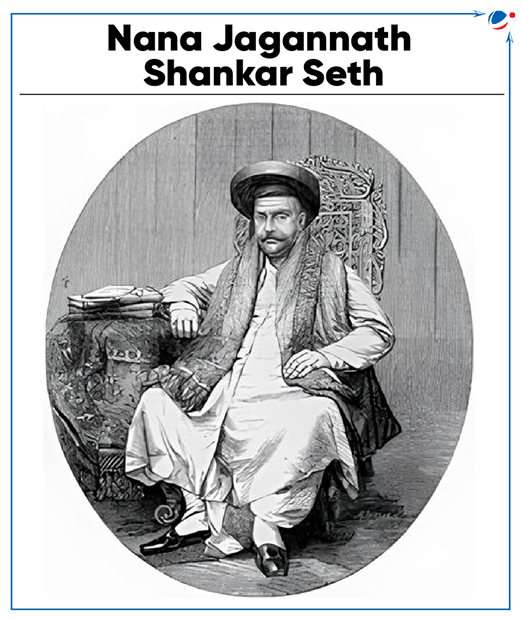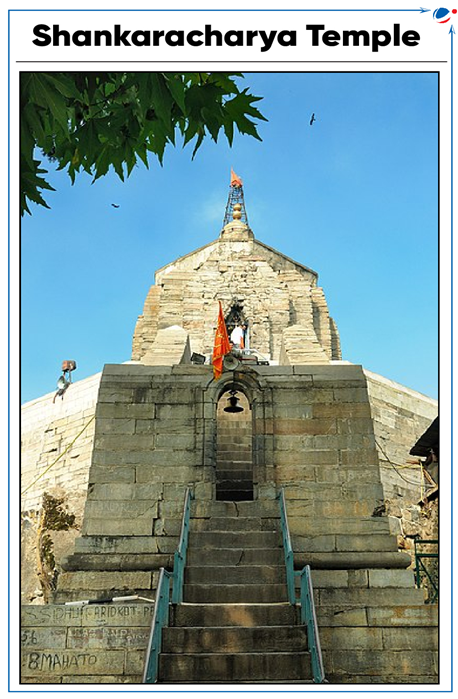GI TAG FOR 10 NEW PRODUCTS
- Geographical Indication (GI) tag was accorded to following products:
State | Product and Description |
Odisha |
|
Bengal |
|
Andhra Pradesh |
|
Madhya Pradesh |
|
Assam |
|
Tripura |
|
Telangana |
|
Gujarat |
|
- A GI is a sign used on products that have a specific geographical origin and possess qualities or a reputation that are due to that origin.
International Recognition:
- Under the Paris Convention for the Protection of Industrial Property, GI is covered as an element of Intellectual Property Rights (IPRs).
- Also covered under the WTO’s Trade-Related Aspects of Intellectual Property Rights (TRIPS) Agreement.
- Tags :
- GI Tags
SIX HERITAGE SITES OF MADHYA PRADESH INCLUDED IN UNESCO’S TENTATIVE LIST
Sites on UNESCO’s Tentative List | Description |
Gwalior Fort |
|
Khooni Bhandara, Burhanpur |
|
Rock Art Sites of Chambal Valley |
|
Bhojeshwar Mahadev Temple, Bhojpur |
|
Gond Monuments of Ramnagar, Mandla |
|
The Historical Ensemble of Dhamnar |
|
- Inclusion in tentative list is first step towards nominating a site for inscription on the UNESCO’s World Heritage List.
- World heritage is designation for places of outstanding universal value to humanity.
- Currently, there are 42 UNESCO World Heritage Sites in India (34 cultural, 7 natural and 1 mixed).
- Tags :
- UNESCO
- Heritage Sites
AYYA VAIKUNDA SWAMIKAL
- The Prime Minister, Shri Narendra Modi has paid tributes to Sri Ayya Vaikunda Swamikal on his birth anniversary

About Ayya Vaikunda Swamikal (Early 19th Century)
- Birth: Born in a poor Nadar family in village of Poovandan Thoppu, near Kanyakumari (Tamil Nadu).
- Parents: Ponnu Nadar and Veyilal Ammaiyar.
Key Contributions
- Among the Pioneer of Indian Renaissance: His famous slogan was “One Caste, One Religion, One Clan, One World, One God” which makes all caste people to feel equality.
- Founded Ayyavajhi Sect: Taught the virtue of non-violence, charity, tolerance and love among the people.
Temple Reformation
- Created new temples (Pathis and Nizhal Thankals) for those who were denied permission to enter the temple.
- Introduced Thottu Namam, encouraging priests to apply sacred paste on devotees' foreheads, regardless of caste.
Social Initiatives
- Initiated the Thuvayal Panthy program to promote vegetarianism
- Organized Samapanthi-bhojana (community eateries)
- Undertook the digging of common wells, known as Muthirikinarus, to provide water access to lower castes who were barred from using upper caste wells.
- Authored books: Akila thiruttu; Arulnool; Ammamai
- Tags :
- Ayya Vaikunda Swamikal
NANA JAGANNATH SHANKARSETH
- Maharashtra cabinet has recently decided to ask the Ministry of Railways to rename Mumbai Central station after Nana Jagannath Shankarseth.
Early life of Nana Jagannath Shankarseth (1803- 1865)
- Birth: Born in a Brahmin family in Murbad in Thane district, Maharashtra.
- Father:Shankar Murkute
- Mother: Bhawanibai Murkute.
- Ideals and Influences: He was greatly inspired by the merchant and philanthropist Sir Jamsetjee Jeejeebhoy.

Key Contributions
- Architect of Mumbai: He led major projects to plan buildings, streets, and avenues in Bombay. This earned him the title "architect" of Mumbai.
- Education Patronage: He donated family-owned land for the establishment of schools, particularly emphasizing education for girls.
- He founded the Native School of Bombay, which later evolved into the prestigious Elphinstone College in 1856.
- Cultural and heritage: Played a significant role in promoting the Dr. Bhau Daji Lad Museum in Byculla, constructed, The Bhawani Shankar Temple and a Ram temple.
- Railway Project: He was member of the committee that gave impetus to the project for the first train in India that ran between Boribunder and Thane on April 16, 1853.
- Political Contributions: He was the first”
- Indian nominated to the Legislative Council of Bombay.
- President of the Bombay Association.
- The association was founded in 1852 by notable figures like Naoroji Furdunji, Narryan DinanathJi, Dr. Bhau Daji, and Dadabhai Naoroji.
- Indian Member of Asiatic Society of Mumbai.
- The society was established in established in 1804 by by Sir James Mackintosh to promote investigation and encouragement of Oriental Arts, Sciences and Literature.
Legacy and influence
- Described as ‘Architect of Modern India’ by the renowned scholar of economics, Gangadhar Gadgil.
- Influenced freedom fighters like Dadabhai Naoroji and Justice Ranade, who adopted his vision of economic nationalism in their pursuit of India's independence.
- Tags :
- Nana Jagannath Shankarseth
WORLD MONUMENTS FUND WATCH
- The Eri (tank) network in the Kazhuveli watershed region in Tamil Nadu is to be proposed for nomination to the World Monuments Fund Watch 2025 program.
- The World Monuments Watch is a nomination-based program that connects local heritage preservation to global awareness and action.
About WMF
- It’s the leading independent organization devoted to safeguarding the world’s most treasured places.
- Headquarters in New York, also has an office in India.
- It has preserved more than 700 sites in 112 countries.
- Tags :
- WORLD MONUMENTS FUND WATCH
SHANKARACHARYA TEMPLE
- PM has offered his reverence to the Shankaracharya Hill and the temple atop it, on his recent visit to Kashmir.
- The hill located in the Zabarwan Range, houses the Shankaracharya Temple.
About the Temple

- The temple is dedicated to Lord Shiva and is located at a height of 1100 feet.
- It is considered as the oldest shrine for worship in Kashmir valley.
- The temple got its name from the visit of the philosopher and saint Adi Shankaracharya.
- He propounded the Doctrine of Advaita and
- He established the four maths namely Dwarka, Joshimath, Puri, and Sringeri.
- Tags :
- Shankaracharya Temple
KOCHRAB ASHRAM
- Prime Minister visited Sabarmati Ashram and inaugurated redeveloped Kochrab Ashram on 12th March.
- On 12th March 1930, Gandhiji started Salt Satyagraha March or Dandi March from Sabarmati Ashram to the coastal town of Dandi.
- At Dandi, Gandhiji broke the British government’s salt law by gathering natural salt on the sea shore.
- Kochrab Ashram in Ahmedabad was the first Ashram established by Mahatma Gandhi after coming to India from South Africa in 1915.
- Jivanlal Desai, a fellow lawyer, helped Gandhiji setup the Ashram.
- Tags :
- Kochrab Ashram
GORSAM KORA FESTIVAL
- Recently, Gorsam Kora festival was concluded in the Tawang district of Arunachal Pradesh.
About Gorsam Kora festival
- An annual festival held at Gorsam Chorten, a 93 feet tall Stupa, built during 13th Century CE by a local monk- Lama Pradhar.
- Theme (2024): ‘Zero Waste Festival’
- Organized by local community of Zemithang in collaboration with civil authorities.
- Zemithang Valley holds historical significance as 14th Dalai Lama found refuge upon his escape from Tibet in 1959.
- Devotees including Bhutanese nationals visit during the festival to observe virtuous occasion during last day of first month of Lunar calendar.
- Tags :
- Zero Waste Festival
- Gorsam Kora festival
SANGEET NATAK ACADEMY (SNA) AWARDS
- President of India conferred SNA Fellowships and Awards for the years 2022 and 2023.
About SNA Awards
- Akademi awards are being conferred since 1952.
- Symbolizes highest achievement in music, dance and drama.
- Awards in Hindustani and Carnatic music were instituted in 1951, even before SNA was set up and these were known as Presidential Awards.
- Honour of Akademi Fellow carries purse money of ₹3 Lakh while Akademi Award carries purse money of ₹1 lakh, besides a Tamrapatra and Angavastram.
- SNA, setup in 1953, is the apex body in the field of performing arts for the preservation and promotion India’s intangible cultural heritage.
- Tags :
- Akademi awards
- Sangeet Natak Academy (SNA) Awards



